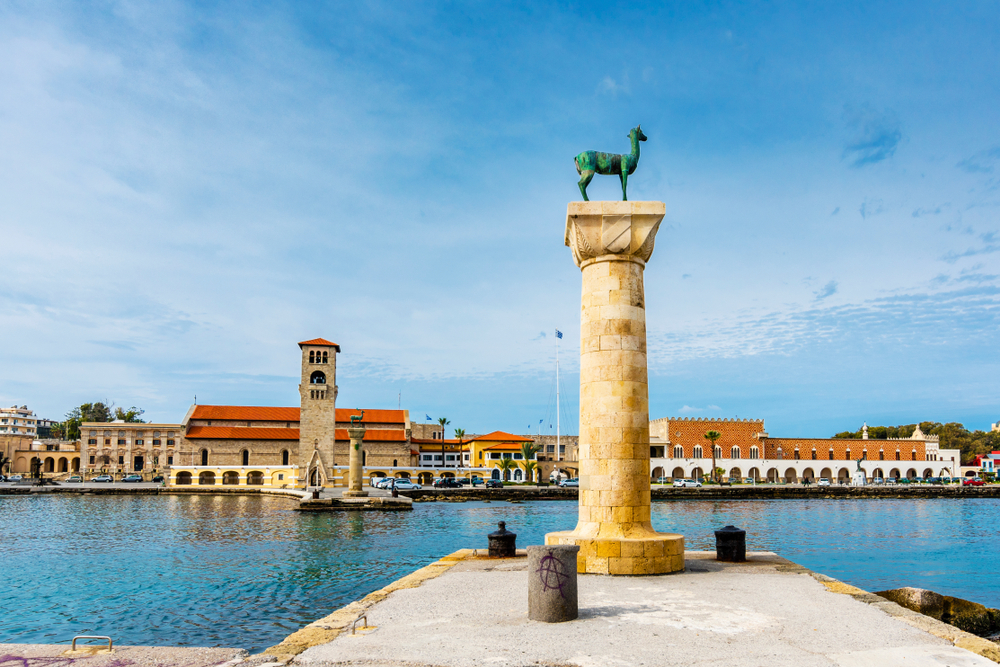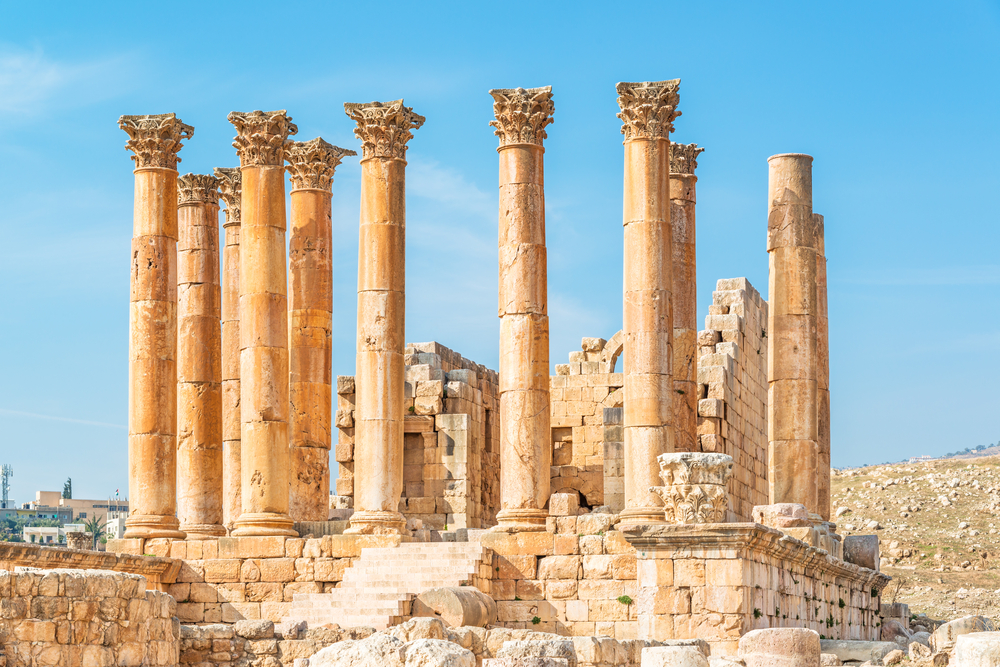We clearly don’t know everything about the ancient world. In fact, it would be impossible to know everything about something that happened 2,000 years ago. But perhaps that’s why so many people are interested in learning more about the subject.
Who were these people of the past? What were their dreams? What did they care about? While a lot of what we know about these past civilizations relies on written texts, we can still catch a glimpse into their world by visiting what are called the Seven Wonders of the Ancient World.
The Seven Wonders of the Ancient World is a list of notable classical antiquity structures offered by various authors in guidebooks or poetry, popular among ancient Hellenic travelers. The wonders were originally referred to as themata, a Greek term that means “extraordinary views.”
The initial list was published in 225 B.C. by Philo of Byzantium in his book “On the Seven Wonders,” and while others prepared rival lists shortly after, his was the one that lasted. Why limit yourself to seven? The ancient Greeks and many other ancient societies thought of seven as a lucky number, much as we do.
Let’s dive in to know more about the surprising facts of the Seven Wonders of the Ancient World.
Facts About the Seven Wonders of the Ancient World

1. The Hanging Gardens of Babylon May Have Been Mythical
The Babylonians allegedly erected these magnificent gardens on the banks of the Euphrates (in modern-day Iraq) around 600 B.C. for King Nebuchadnezzar II and his lover Amytis, who missed her country. The crucial word here is “supposedly,” because they may not have existed at all.
The gardens climbed 75 feet into the air on a vast brick terrace, according to descriptions in both Greek and Roman literature. If they existed, they would have needed a lot of water and a complicated irrigation system to maintain things lush.
However, no firsthand descriptions of the gardens have been found in any Babylonian sources so far, prompting many historians to speculate that the Hanging Gardens were just an overblown depiction of other gardens that grew nearly mythological over time. We may never know for certain because the gardens were reported to have been devastated by an earthquake.
2. The Great Pyramid of Giza Was Originally White
Egypt’s Great Pyramid, the only entry on the list that still remains today, attracts millions of tourists each year who come to marvel at its enormity. Some of them have no idea that the spectacular edifice was originally dazzling white.
Between 2700 and 2500 B.C., the pyramid, also known as Khufu, was erected with two others as pharaohs’ tombs. Khufu was the biggest of the three, with over 2 million stone blocks spread across 13 acres.
Until the 19th century, nothing on the planet could compare to it in terms of height. The original white tint came from a Tura limestone exterior casing.
Despite the fact that it remained intact for centuries after its construction, an earthquake in the 14th century shattered portions of the outside stones. The limestone was subsequently extracted in large quantities for use in other construction projects.

3. The Colossus of Rhodes Inspired the Statue of Liberty
This 100-foot-tall copper sculpture was the most transitory of the ancient marvels. Built over 12 years and finished in 280 B.C., it was destroyed by an earthquake less than 60 years later.
Despite this, the fractured remains drew tourists for hundreds of years, until they were sold for scrap metal during an Arab conquest in the 7th century. We’ll never know what the Colossus of Rhodes looked like, but it did inspire one of America’s most famous structures.
The sculpture represents the sun deity Helios, but 19th-century painters reimagined the characteristics as more feminine than male. You may observe how this old wonder lives on the next time you view the Statue of Liberty in New York Harbor.
The sculptor of Lady Liberty, Frederic-Auguste Bartholdi, stated that he was influenced by both the placement of the Colossus, which guides visitors into the port, and artistic representations of the face.
4. The Statue of Zeus at Olympia Could Laugh
Zeus, as King of the Gods, deserved nothing less than a majestic temple and statue. Sculptor Phidias erected a statue that peered magnificently across the site of the ancient Olympics twenty years after the temple at Olympia was completed in the 5th century B.C. An ivory and gold Zeus sat bare-chested on an ebony and gemstone-encrusted oak throne.
His head almost reached the temple ceiling since the statue was so tall. The temple was hit by lightning shortly after it was finished, which was interpreted as Zeus’ approval. However, there is another mythology associated with the monument.
Emperor Caligula decided to relocate the statue to Rome, where his own likeness would replace Zeus’. According to historian Suetonius, a great chuckle suddenly emerged from the statue as a work party intended to carry out the emperor’s requests.
The scaffolding fell as a result of the noise, and the employees fled in terror. Caligula was killed soon after, prompting some to believe that Zeus’ laughing was a warning not to meddle with the gods.

5. The Temple of Artemis Was Built on Sheepskin
Earthquakes are common in the Mediterranean area, and tremors have caused the collapse of numerous wonders. However, ancient engineers devised a novel approach to aid in the protection of Ephesus’ Temple of Artemis. Work began at 550 B.C. and lasted 120 years.
The finished product was a magnificent marble building with 127 columns and a statue of the goddess. “When I saw the palace of Artemis that rose to the skies,” one Greek poet observed, “those other marvels lost their brilliancy.” Pliny the Elder was mainly taken by the foundations.
Pliny claims that the temple was erected on marshy terrain to mitigate the effects of earthquakes. To cushion and sustain the weight of the structure above, the foundations were built of alternating layers of charcoal and sheepskins. Later digs revealed layers of charcoal, but any sheepskin had rotted away with no trace.
6. The Mausoleum at Halicarnassus Is a Monument to True Love
Long before India’s Taj Mahal, there was the Mausoleum at Harlicarnassus, a magnificent white marble monument to passionate love, similar to the present landmark in Agra. Mausolus reigned over Carnia in modern-day Turkey until his death in 353 B.C.
His wife, Artemisia, was so upset by his death that she had a massive marble monument made in his honor. Standing in the middle of the city, it towered 140 feet above its surroundings, with elaborate multicolored reliefs decorating each outside wall.
Four marble horses dragged a chariot drawn by a bronze figure of Mausolus above the pyramid-shaped roof.
Another ancient marvel devastated by earthquakes during the Middle Ages was Mausolus’ tomb, although some of the sculptures survived and are now held in London’s British Museum.
By the way, if you want to learn more about the ancient world, this book is filled with thought-provoking text and stunning visuals on the subject.
If you liked our article on the seven wonders of the ancient world, you may also want to read 6 Gorgeous Cities You’ve Probably Never Heard Of.










